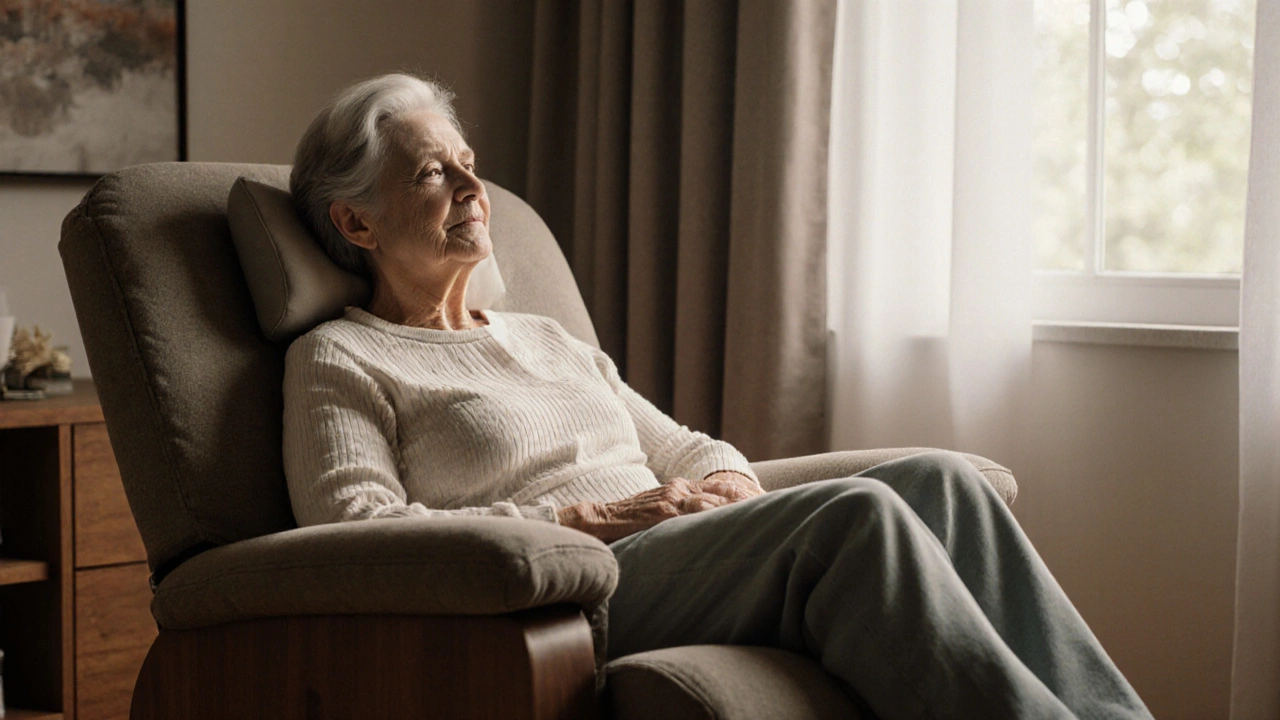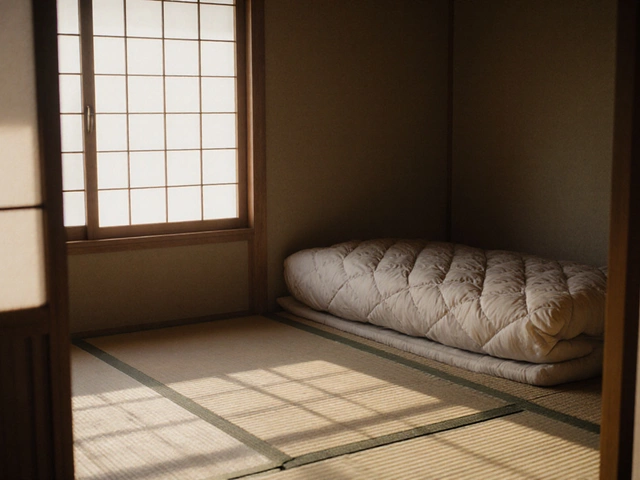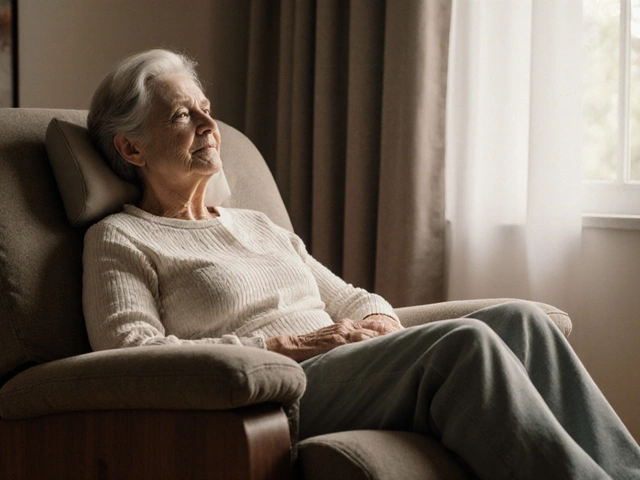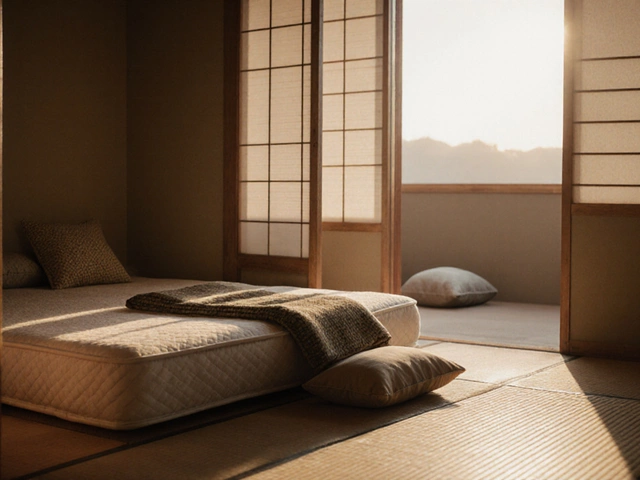Degenerative Disc Disease Recliner Assessment Tool
Recliner Suitability Assessment
This tool helps determine if your recliner meets the key requirements for managing degenerative disc disease. Based on expert guidelines from the article.
If you have degenerative disc disease, sitting down can feel like a daily battle. Every time you lower yourself into a chair, you wonder: is this helping or hurting? Recliners promise comfort, but are they actually safe for your spine? The answer isn’t simple-because it depends on how you use them.
What Happens to Your Spine When You Sit in a Recliner?
Degenerative disc disease means the cushioning between your vertebrae is breaking down. That makes your spine less able to absorb shock. When you sit upright in a regular chair, your lower back bears most of your body weight. That pressure squeezes the discs, often making pain worse.
Recliners change the game. When you lean back, your body weight shifts. Instead of pressing straight down on your lumbar spine, the load spreads across your back, hips, and thighs. A good recliner lifts your legs slightly above your heart level, which reduces pressure on the discs by up to 40%, according to a 2023 biomechanics study from the University of Waterloo.
But here’s the catch: not all recliners do this well. Cheap models with shallow backrests or no lumbar support can actually force your spine into an unnatural C-curve. That’s worse than sitting upright. The key isn’t just owning a recliner-it’s choosing the right one and using it correctly.
The Right Recliner for Spinal Health
A recliner that helps with degenerative disc disease has three non-negotiable features:
- Lumbar support that curves to match the natural inward bend of your lower spine. Look for adjustable or contoured padding-not just a flat cushion.
- Leg elevation that lifts your feet above your hips. This takes pressure off the discs and helps reduce swelling in the legs.
- Recline angle between 110 and 135 degrees. Too upright (under 100 degrees) and you’re back to sitting like a desk chair. Too reclined (over 140 degrees) and your spine flattens unnaturally, straining ligaments.
Brands like La-Z-Boy, Flexsteel, and Stressless have models specifically designed for back pain. Their zero-gravity settings mimic the position astronauts use during launch-where your body is evenly supported and pressure is minimized. These aren’t gimmicks. They’re backed by physical therapy research.
One patient in Mississauga, 62, with L4-L5 degeneration, switched from a standard sofa to a zero-gravity recliner. Within three weeks, her daily pain dropped from a 7/10 to a 3/10. She didn’t take more medication. She didn’t get surgery. She just changed how she sat.
How to Use a Recliner Without Making Things Worse
Even the best recliner can hurt you if you misuse it.
- Don’t stay in it for hours. Sitting still for too long-even in a perfect chair-reduces blood flow to spinal discs. Get up every 30 minutes. Walk around. Stretch your hips.
- Avoid slouching. Some people think reclining means collapsing. Don’t let your head droop forward or your shoulders roll. Keep your ears over your shoulders. Use a small pillow behind your neck if needed.
- Don’t use it as a bed. Sleeping in a recliner can twist your spine overnight. If you need to nap, set a timer for 20 minutes.
- Combine it with movement. Recliners are for rest, not recovery. Pair your sitting time with daily walks, gentle yoga, or aquatic therapy. Movement keeps discs hydrated and flexible.
Think of your recliner like medicine: it helps when used properly, but it’s not a cure. It’s a tool to manage pain, not avoid it.

What About Massage Recliners?
Massage features sound tempting. Who doesn’t want a built-in rubdown? But here’s what most people don’t realize: deep tissue massage can aggravate inflamed discs. The vibrations and pressure can irritate already sensitive nerves.
If you want a massage recliner, choose one with gentle, low-intensity settings and avoid targeting your lower back directly. Focus the massage on your shoulders and upper back instead. Some models let you turn off the lumbar massage entirely-use that feature.
A 2024 survey of 217 people with degenerative disc disease found that those who used massage recliners with high-intensity lumbar settings reported a 22% increase in pain flare-ups within two weeks. Those who used low settings or skipped lumbar massage saw no change or slight improvement.
Alternatives to Recliners
Recliners aren’t the only option. If you’re unsure, try these alternatives:
- Adjustable office chairs with tilt and lumbar support-like the Herman Miller Aeron or Steelcase Leap. These are great if you work from home.
- Zero-gravity loungers-outdoor versions that mimic recliner benefits without the bulk.
- Wedge cushions-place one under your thighs while sitting upright. It tilts your pelvis forward, reducing disc pressure.
- Standing desks with perching stools-alternate between standing and light sitting to keep things moving.
Some people with severe disc degeneration find that standing more than sitting helps most. But standing all day isn’t realistic for everyone. That’s where a well-chosen recliner fits in: it’s the middle ground.
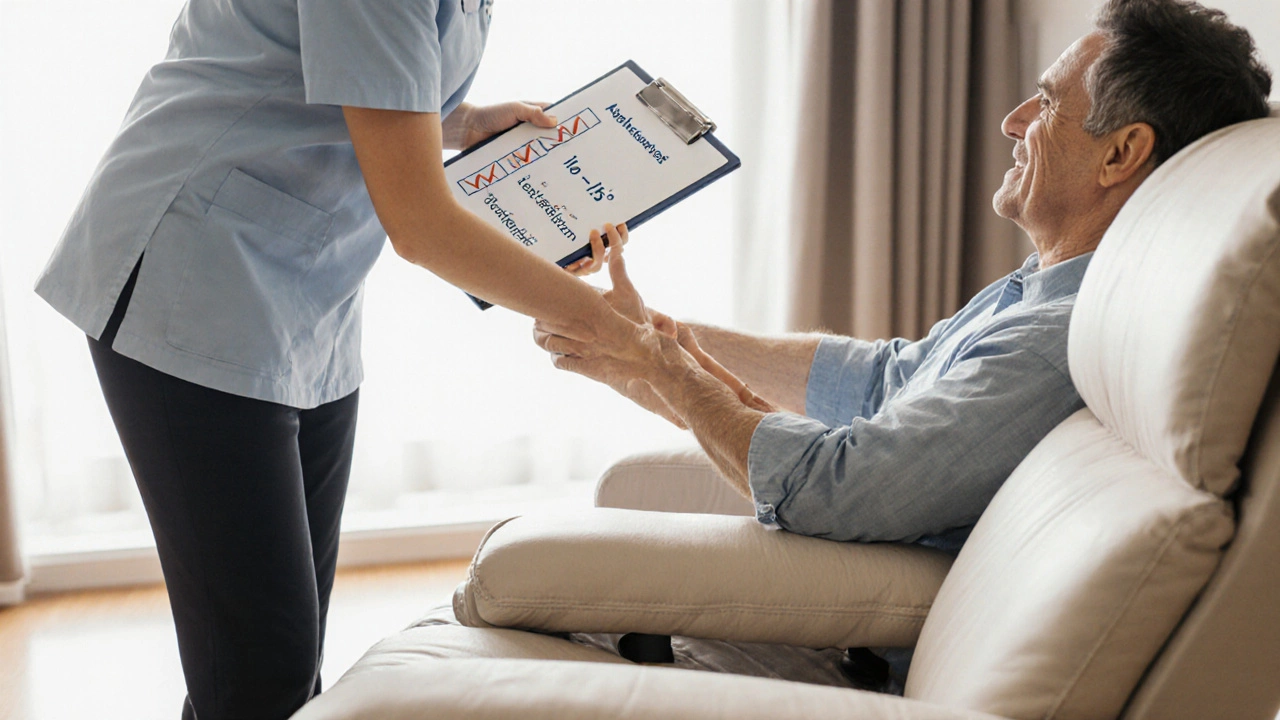
When to Avoid Recliners Altogether
There are times when even the best recliner isn’t safe:
- If you have spinal stenosis along with disc degeneration, reclining too far back can narrow the spinal canal further.
- If you’ve recently had spinal surgery, your doctor may advise against reclining until your fusion or healing is complete.
- If you feel sharp, shooting pain when you recline, stop. That’s a nerve warning, not just muscle soreness.
Always check with your physical therapist or spine specialist before making big changes. What works for one person might worsen another’s condition.
Real-World Tips from Physical Therapists
Here’s what spine rehab specialists in Ontario actually tell their patients:
- Test before you buy. Spend 15 minutes in the store reclining. If your pain increases, walk away.
- Look for memory foam or gel padding. It molds to your shape and doesn’t bottom out over time.
- Check the recline mechanism. Manual levers are better than motorized ones if you have weak arms or arthritis.
- Don’t ignore the footrest. It should extend fully without forcing your knees into an awkward angle.
- Buy from a store with a return policy. You might need to try it at home for a week to know if it really helps.
One therapist in Hamilton told me: "I’ve seen people spend $2,000 on a recliner that doesn’t fit their body. Then they blame the chair. But the chair wasn’t the problem-it was the fit. Like shoes, chairs need sizing too."
Final Verdict: Recliners Can Help-If You Choose Wisely
Recliners aren’t inherently bad for degenerative disc disease. In fact, when designed and used correctly, they can be one of the most effective tools for daily pain relief. The problem isn’t the chair-it’s the wrong chair, or the wrong way of using it.
If you’re serious about managing your condition, invest in a recliner that supports your spine’s natural curve. Combine it with movement. Avoid long static sits. And listen to your body. Pain is your signal-not your enemy.
There’s no magic solution. But for millions of people with degenerative disc disease, a good recliner isn’t luxury. It’s a necessity.
Can recliners make degenerative disc disease worse?
Yes, if the recliner lacks proper lumbar support, forces your spine into a C-curve, or encourages slouching. Poorly designed recliners can increase pressure on the discs and irritate nerves. Always choose one with adjustable support and test it before buying.
Is a zero-gravity recliner better for back pain?
Yes. Zero-gravity recliners position your body so your heart is level with your feet, reducing spinal pressure by up to 40%. This position helps relieve disc compression and improves circulation. Many physical therapists recommend them for degenerative disc disease.
How long should I sit in a recliner with degenerative disc disease?
Limit sessions to 30-45 minutes at a time. Prolonged sitting-even in a good chair-reduces nutrient flow to spinal discs. Get up every half hour to walk, stretch, or do gentle hip circles. Movement is key to disc health.
Should I use a massage recliner for back pain?
Only if the massage is gentle and avoids direct pressure on the lower back. High-intensity vibrations can irritate inflamed discs and nerves. Use low settings and focus on the upper back or shoulders instead. Turn off lumbar massage if it causes discomfort.
What’s the best recliner brand for degenerative disc disease?
Brands like La-Z-Boy, Stressless, and Flexsteel offer models with adjustable lumbar support, zero-gravity positioning, and memory foam padding. Look for ones with a recline angle between 110-135 degrees and a footrest that lifts your legs above your hips. Always test in-store before buying.
Next time you feel that dull ache after sitting, don’t just reach for painkillers. Check your chair. It might be the missing piece in your pain management plan.

